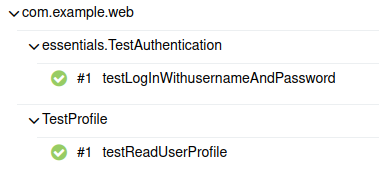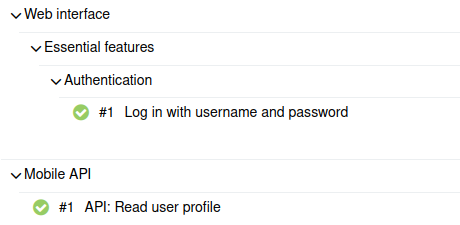Improving Navigation in Your Test Report
A big enough project can have hundreds or even thousands of tests. When collecting information about tests, Allure can organize the results into easy-to-grasp tree structures. With such a structure, a reader of the test report can easily navigate to the test results they need.
Allure generates different trees on the Suites, Behaviors, or Packages tabs of the report. Different hierarchies can be convenient for different roles in the same team: for example, a test engineer may pay more attention to the Behaviors tree, while a developer analyzes the Suites tree, etc.
You can choose the one that better aligns with the development workflow in your project. For each hierarchy, Allure expects test authors to assign specific fields to the tests. The exact functions that should be used for assigning the fields vary between different Allure adapters.
INFO
This article describes hierarchies that are built based on the information about the tests themselves. For a hierarchy based on the test errors, see Defect categories.
Behavior-based Hierarchy
Epics, features and user stories are widely-used terms for describing a software's features and organizing tests for said features. Usually, an epic is a large set of features that the team aims to develop and test, and a feature is described as a set of user stories that describe how the software is expected to behave in different scenarios.
Allure adapters for all test frameworks provide ways to indicate a test's epic, feature and user story. If a test framework lets the author define some of these terms natively, e.g., in its own language-agnostic file format, then Allure tries its best to incorporate the provided data into the generated tree structure. See the specific Allure adapter's documentation for more details.

Suite-based Hierarchy
A test suite is an abstract term for any group of tests, with its actual meaning depending on the specifics of your project.
Allure adapters for all test frameworks provide ways to indicate a test's suite, with most of them also providing ways to indicate parent suites and sub-suites, for the total of up to three levels of hierarchy. Note, however, that the implementation may differ in how the default values are chosen for these fields based on the data provided by the test frameworks itself. See the specific Allure adapter's documentation for more details.

Package-based Hierarchy
In some projects, it is convenient to organize tests by packages, closely following the structure of the code. To place a test in the tree on the Packages tab, Allure normally uses the actual names of the module and the function in which the test is implemented.
Some Allure adapters allow overriding this behavior. However, it is recommended to always follow the hierarchical naming convention for packages, with subpackage names placed after package names, separated by dots.
In the tree, packages' common prefixes are shown as their parent packages.

Omitting Tree Levels
In all the hierarchies described above, none of the fields are necessary.
To determine a test's location in the Suites or Behaviors hierarchy, Allure checks for the relevant fields in the predefined order:
- for behavior-based hierarchy: epic, feature, user story,
- for suite-based hierarchy: parent suite, suite, sub-suite.
For each provided field, Allure creates a subtree in the test results tree. If the field was not provided, the subtree creation is skipped.
In the example below (written in Java using Allure JUnit 5), the second test only has the feature field. In the report, its feature is displayed at the top level, essentially becoming this test's epic.
import io.qameta.allure.Epic;
import io.qameta.allure.Feature;
import io.qameta.allure.Story;
import org.junit.jupiter.api.DisplayName;
import org.junit.jupiter.api.Test;
public class AllureNavigationTest {
@Test
@Epic("Web interface")
@Feature("Essential features")
@Story("Authentication")
@DisplayName("Log in with username and password")
public void testLogInWithUsernameAndPassword() {
// ...
}
@Test
@Feature("Mobile API")
@DisplayName("API: Read user profile")
public void testReadUserProfile() {
// ...
}
}